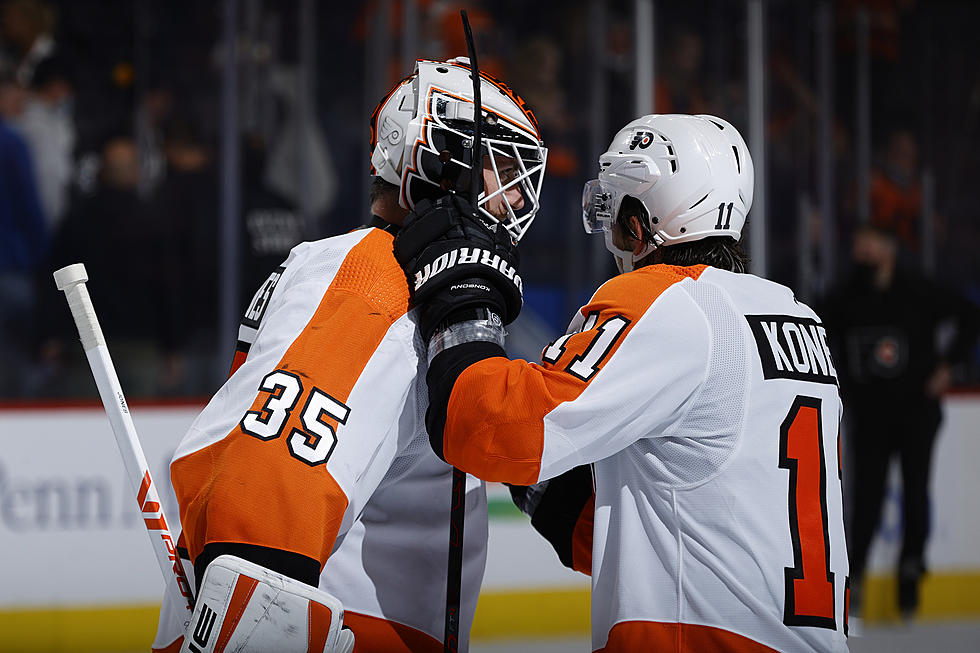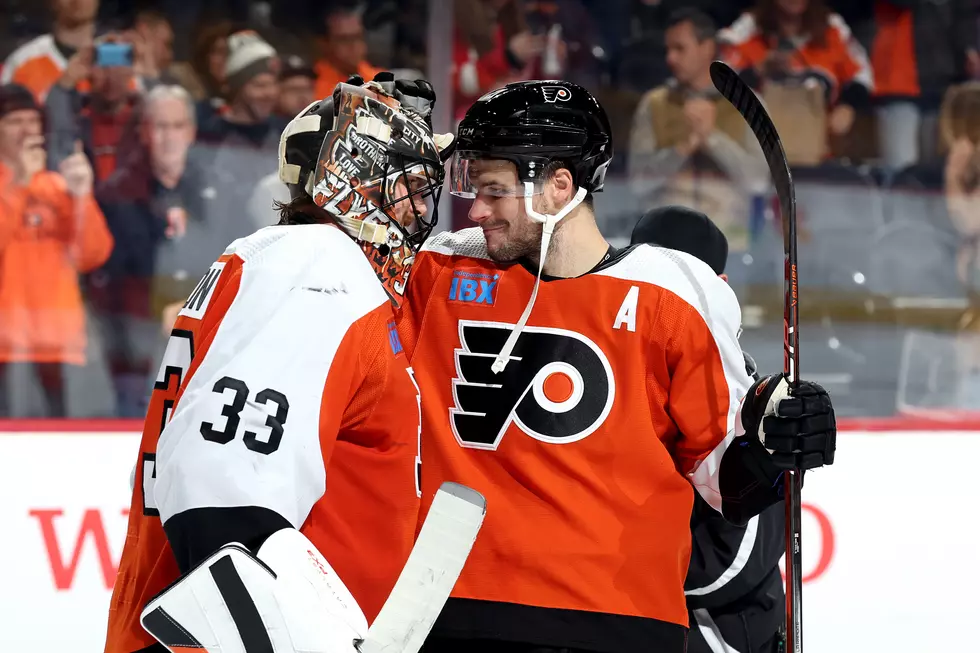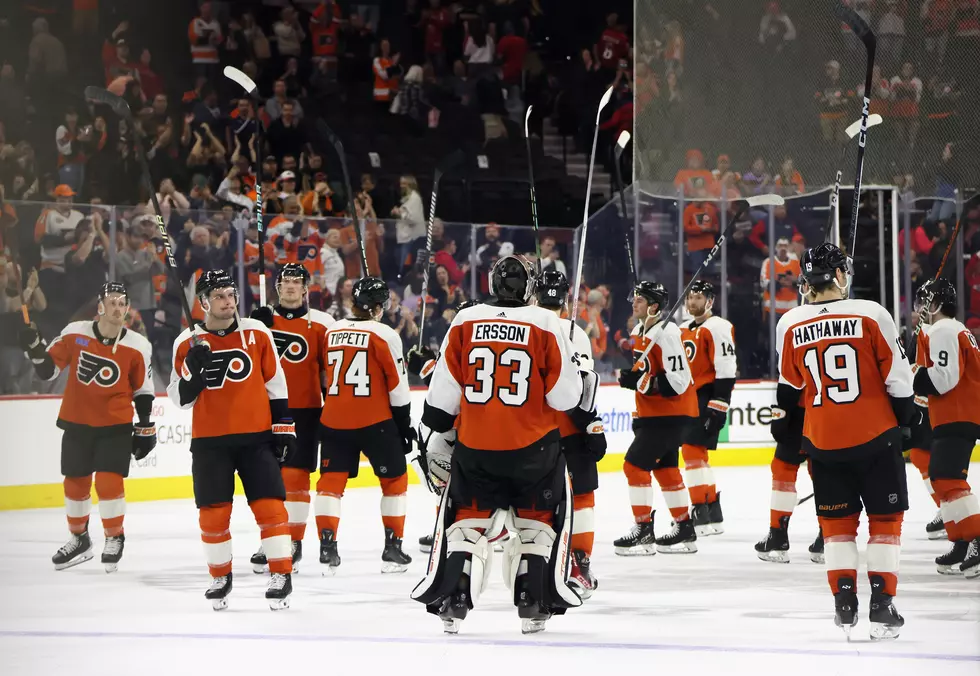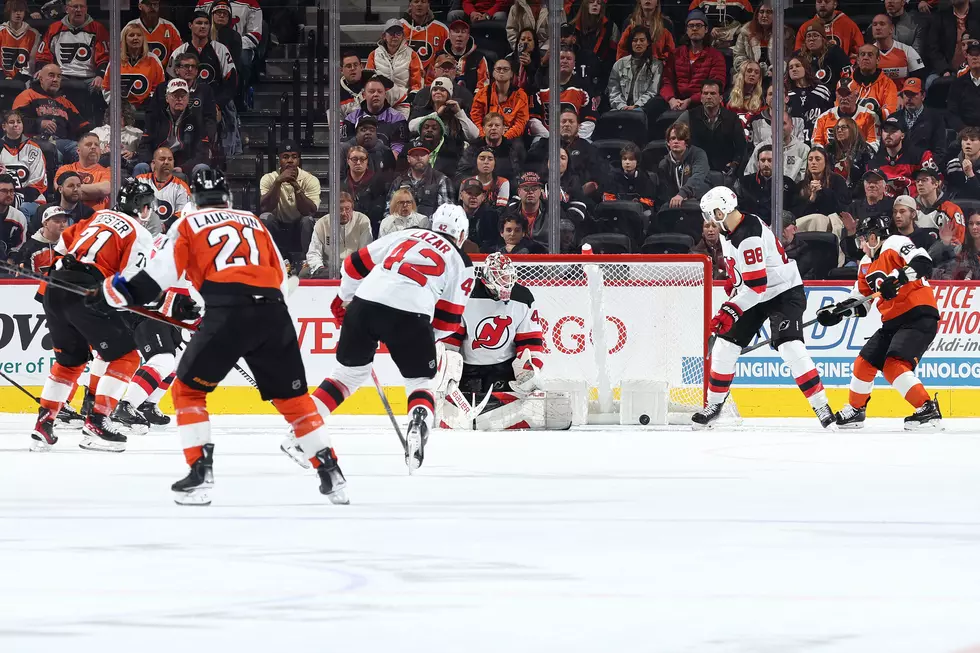
Flyers 5: Takeaways from Thursday’s Flyers-Canucks Game
One of the big question marks coming into the season was just what kind of performance the Flyers would get from Martin Jones. The 31-year-old netminder was coming off three straight seasons with a .896 save percentage. Knowing he was going to likely shoulder games like Thursday’s back end of a back-to-back, the Flyers need to know they can rely on him.
If he plays consistently like he did on Thursday, the Flyers should be in good hands. Jones made 27 saves and was the difference in a 2-1 win over the Vancouver Canucks, lifting the Flyers to a 4-1-1 record to start the season.
Here are five takeaways from Thursday’s win.
1. Homecoming Win for Jones
The first shot Martin Jones faced in the game rang off the post behind him and banked into the net off his pad. It erased an early goal to put the Flyers in front. But from there, Jones was the difference-maker in the game.
Jones didn’t see much action beyond the goal in the first period. The Flyers came out so strong that they only allowed four shots total in the opening frame, with Jones making three saves.
But as the second period started and Vancouver built momentum, Jones became the center of attention. The Canucks had 16 shots in the second period, plus two power plays that really tilted the ice in their favor. Jones stood tall throughout and was at his best. There weren’t any rebounds. He was square, poised, and tracking everything as bodies piled up in front of him on several occasions.
Then came the third period, where again the Flyers were clinging to a one-goal lead. Jones held his ground again, making eight more saves and helping the Flyers fend off three more man-down situations. His best save of the night may have come just before the final Vancouver power play with 1:20 to play in the third, as a shot by Brock Boeser hit him square in the mask as he slid across the crease.
It’s no secret that when the Flyers signed Jones, they were signing a player they were betting on to play behind Carter Hart regularly, especially with as many back-to-backs as the Flyers are facing this season. Jones’ first chance to show he can be the player of the game on those nights, especially when his team needs him most, was a whopping success.
2. Quick Strike from Top Line
The Flyers were on the board in just 22 seconds, and it was just the first shift for the top line that really went to work on every shift of the opening period and set the tone. Sean Couturier was the goal-scorer, getting a feed from Travis Konecny and quickly firing it stick side on Jaroslav Halak.
But beyond Couturier’s goal, this line was buzzing a lot in the early going. When you really want to set a tone, especially on the road in the second-half of back-to-back games, it sure helps when your best players are leading by example.
Overall, Claude Giroux, Couturier and Konecny combined for 10 of the team’s 28 shots in the game and were really at the center of many of the scoring chances the team had.
3. Power Play Makes a Difference
On their first power-play attempt of the game, less than five minutes after Vancouver had tied the game back up, the Flyers made quick work of it. Ten seconds, in fact.
That’s how long it took for the Flyers to execute a similar play to when they tied the game against Vancouver on Oct. 15 on opening night. Instead of Couturier, it was Giroux making the bank pass off the endboards to Couturier. And rather than shoot, Couturier quickly made the pass to the netfront where James van Riemsdyk tipped it home.
For van Riemsdyk, it was a well-deserved first goal of the season, after coming close on several chances in games prior. It also gave Couturier and Giroux each another multi-point showing. For Giroux, that’s now eight points in six games on the young season.
4. Penalty Kill Makes Another Late-Game Stand
The last three games has featured a method the Flyers don’t want to live by. The parade to the penalty box continued in Thursday’s game with another five power plays for Vancouver.
Now, the Flyers did really clean this area up on Wednesday beyond the first period, taking only the late interference penalty in the final 40 minutes in Edmonton. In this game, they actually went through the first 20 minutes completely free of penalties.
Call it tired legs and fatigue, but the Flyers started committing more penalties in the second and third. Vancouver’s first power play was actually more a technicality. Zack MacEwen and Luke Schenn dropped the gloves and had a nice scrap, but MacEwen grabbed Schenn’s visor, which results in an unsportsmanlike conduct minor.
It’s something I’ve only seen called one other time in a Flyers game, and ironically, it also involved Luke Schenn. Schenn was still with the Flyers then, and dropped the gloves with Steve Downie of the Pittsburgh Penguins on Jan. 20, 2015.
You can see the linesman point as Downie grabs Schenn’s visor in the clip. At the tail end of the clip, you also see him demonstrate on Giroux.
From there, the Flyers got hit with some unfortunate penalties, mostly in timing. Oskar Lindblom was guilty of a holding penalty after the Flyers failed to take advantage of a late second-period power play and early third-period power play. James van Riemsdyk took a tripping penalty in the offensive zone.
But the biggest one of all was another late test for the PK. Ivan Provorov was off for tripping with 1:20 to go. Not only did the Flyers have to stand tall one more time, they had to do it with their top defenseman off the ice.
But the Flyers killed off the final 80 seconds, securing yet another victory.
5. Not in the Box Score
Over the first five games, the Flyers were getting plenty of goals from their top players. Giroux, Konecny, Couturier, Joel Farabee, Cam Atkinson – it was pretty constant. To this point, the third line has yet to make a significant impact in that department. Scott Laughton scored last Wednesday against Boston. van Riemsdyk got on the board with the power-play goal on Thursday.
That said, what the Flyers’ current third line of Laughton, Lindblom and van Riemsdyk is doing is showing some real determination to win battles and maintain possession. It’s one thing when you aren’t scoring because you can’t generate. It’s another when the work ethic is there and the bounces may not be going your way or your best chances are stopped.
This line has been much more effective than it seems. Even with the early production from the top line, there were moments when this trio was the best on the ice for the Flyers. That can only lead to good things down the road, especially as the Flyers depth continues to be tested against challenging opponents.
Kevin Durso is Flyers insider for 97.3 ESPN and Flyers editor for SportsTalkPhilly.com. Follow him on Twitter @Kevin_Durso.
Philadelphia Flyers Uniforms Through The Years
More From 97.3 ESPN









